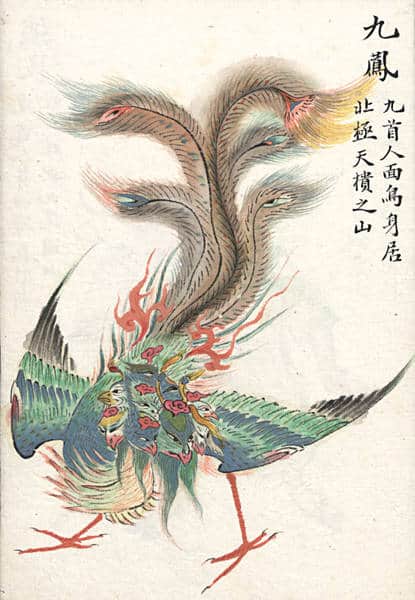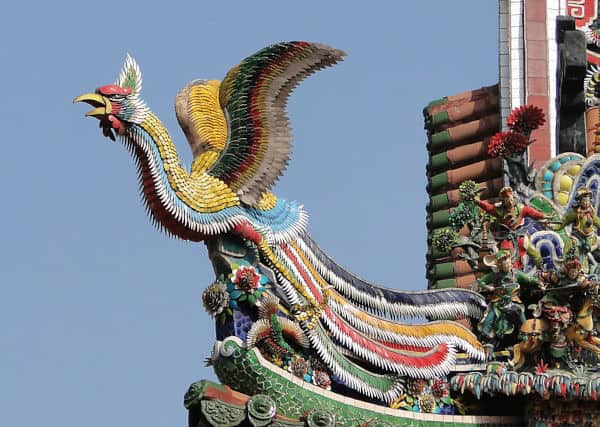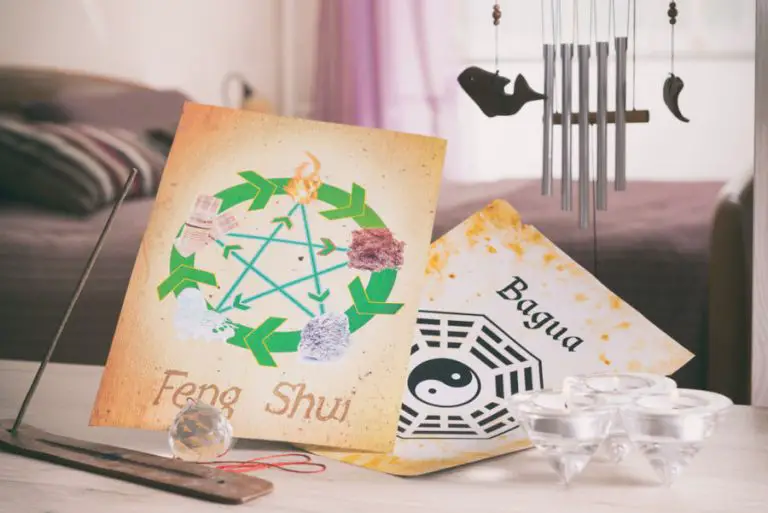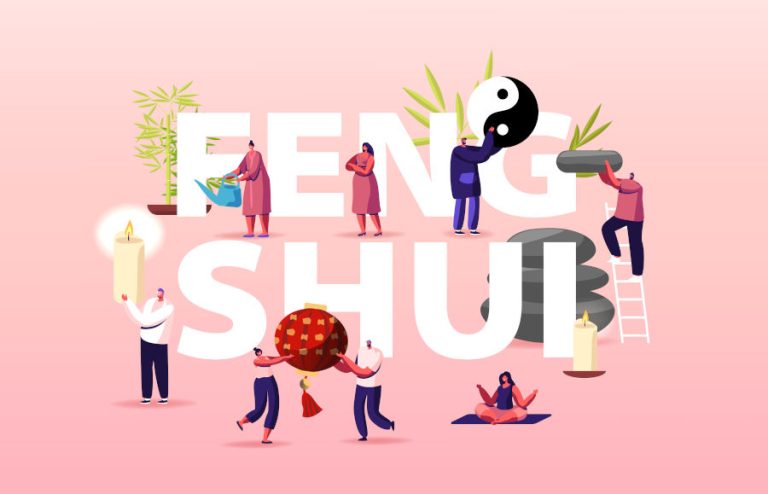In China, the Phoenix is also called Fenghuang, and similar to the western counterpart, the mythological creature is an immortal bird that also represents the element of fire. The Chinese Phoenix is believed to symbolize harmony, and in ancient China, the appearance of the Fenghuang is believed as a sign when a new emperor is going to rise to lead the country.
In Chinese mythology, the male Phoenix is called Feng, while the female is called Huang. However, along with time gender difference is no longer emphasized, and now the Fenghuang is more often depicted as a female entity, paired with the masculine dragon.
A common depiction of the Chinese Phoenix is of it attacking a snake (or snakes) with its talons with the wings spread. Traditionally the Fenghuang is said to have the beak of a rooster, the forehead of a fowl, the face of a swallow, the neck of a snake, the back of a tortoise, the breast of a goose, the tail of a fish, and the hindquarters of a stag.
Nowadays, however, the Fenghuang is more often depicted as a combination of many beards, typically the body of a mandarin duck, head of a pheasant, the tail of a peacock, and the beaks of a parrot.
What Does The Chinese Phoenix Symbolize?
Traditionally the Fenghuang was believed to appear when the legendary Yellow Emperor, who reigned over China during the times of the Zhou dynasty, found political prosperity and harmony. This is why the Chinese Phonenix is believed to symbolize virtue, harmony, ritual, compassion, trust, and especially, peace.
According to a 4th century BCE Chinese literature called Classic of Mountains and Seas, the head of the Fenghuang represents virtue, the wing symbolizes duty, the back symbolizes propriety, the abdomen stands for credibility, and the chest represents mercy.
In China, the Chinese Phoenix statures are often found in events like weddings or New Year festivities, since the Fenghuang is considered as a symbol of a new beginning.
As a Feng Shui charm, the Chinese Phoenix is also a symbol of fortune, and when used correctly in the right position, it can bring positive chi to your home and workplace. It can also be used as a Feng Shui cure for harmony, especially by placing a Phoenix and Dragon statue in the southwest corner of the bedroom for married couples.
To summarize, the Chinese Phonix carries several different meanings in Chinese Feng Shui, mainly:
- Peace and Harmony: the appearance of the Fenghuang is always considered as the start of a new beginning, the start of an era filled with peace, harmony, and prosperity. Phoenix sightings at the birth of a prince, for example, is believed to mean that the child would grow up to become a great emperor.
- Balance: symbolizing the balance between yin and yang, often believed to symbolize marital harmony.
- Virtue: Its colorful feathers in white, black, red, yellow, and green are believed to represent loyalty, decorum, justice, and honesty.
Related reading: “Chinese Good Luck Charms To Bring Good Fortune” –Opens in new tab
Chinese Phoenix VS Western Phoenix
In the West, most people believed that the western Phoenix originated in Greek mythology but now is widely accepted as a global symbol of resurrection and rebirth. Almost all stories of the Phoenix tell the same tale of how the bird is unique and alone without any spouse or child.
In America, the Phoenix was actually depicted on the Great Seal of the United States in 1782 before it was replaced by the Eagle. In Native American culture, the Phoenix is called the Thunderbird, which is a large and colorful bird with red as its main color. It is believed to produce very strong wings when the Thunderbird flaps its wings, creating rain and thunder in the process. The Thunderbird played an important role in Native American traditions and rituals.

Another story said that the Phoenix originated in ancient Egypt before the legend was developed further by the Greeks and the Romans.
A very important difference between the Western Phoenix and the Chinese Phoenix is that the Fenghuang is immortal and does not go through a cycle of death and rebirth, as often depicted in various Western stories about the Phoenix. Rather, the Fenghuang lives eternally but hidden, and would only appear to humans during special occasions like the birth of a special child, as discussed above.
In Chinese mythology, the Phoenix is part of four celestial animals, together with the Dragon, Kirin (Chinese Unicorn), and Great Tortoise, and they are believed to be the ones that created the world and now govern the heavens. The Fenghuang governs the southern corners of the heavens and is associated with the sun.
So, as we can see, although there are several similarities between the Western Phoenix and the Fenghuang, there are also some key differences. H
Want to learn more about Feng Shui? Take a look at these Courses and Books – Aff.link
Chinese Phoenix in Feng Shui Applications
Here are some popular ways to use the Chinese Phoenix in Feng Shui:
- You can display the Phoenix and the Dragon together in your personal Romance/Nien Yen direction to enhance the owner’s luck in romance. For singles, this is believed to help in attracting potential spouses into your life, while for married couples it is believed to attract marital harmony.
- The southwest area of the house/office is considered the love and relationship sector, and you can place a Phoenix statue alone in this direction.
- You can place the Phoenix in the east direction of your living room if you want to wish for good health, fame, and knowledge.
Like most Feng Shui charms, avoid placing the Phoenix in the kitchen or bathroom, which are considered places with negative energy.
Phoenix and Dragon in Feng Shui
In Chinese culture and Feng Shui, the Dragon and Phoenix are often regarded as a perfect couple symbolizing balance, harmony, and everlasting love. This is why the Chinese Phoenix is often depicted together with the Dragon in many Feng Shui applications.
The dragon is believed to carry the masculine, Yang energy while the Phoenix belongs to the feminine or Yin energy. The Dragon is believed to symbolizes power and authority, while the Phoenix represents hope, fame, and opportunities. When they are placed together, they are believed to bring a balance of the yin and yang energy to create harmonious energy in the area they are placed in.
Related reading: Owls in Chinese Culture and as Feng Shui Symbol – Opens in new tab
Stay in Touch
 Join our newsletter by using the forms on this website or click here!
Join our newsletter by using the forms on this website or click here! Follow us on Google News
Follow us on Google News Follow us on Facebook
Follow us on Facebook
Featured Image by Bernard Gagnon from Wikimedia Commons (CC BY 2.0)





